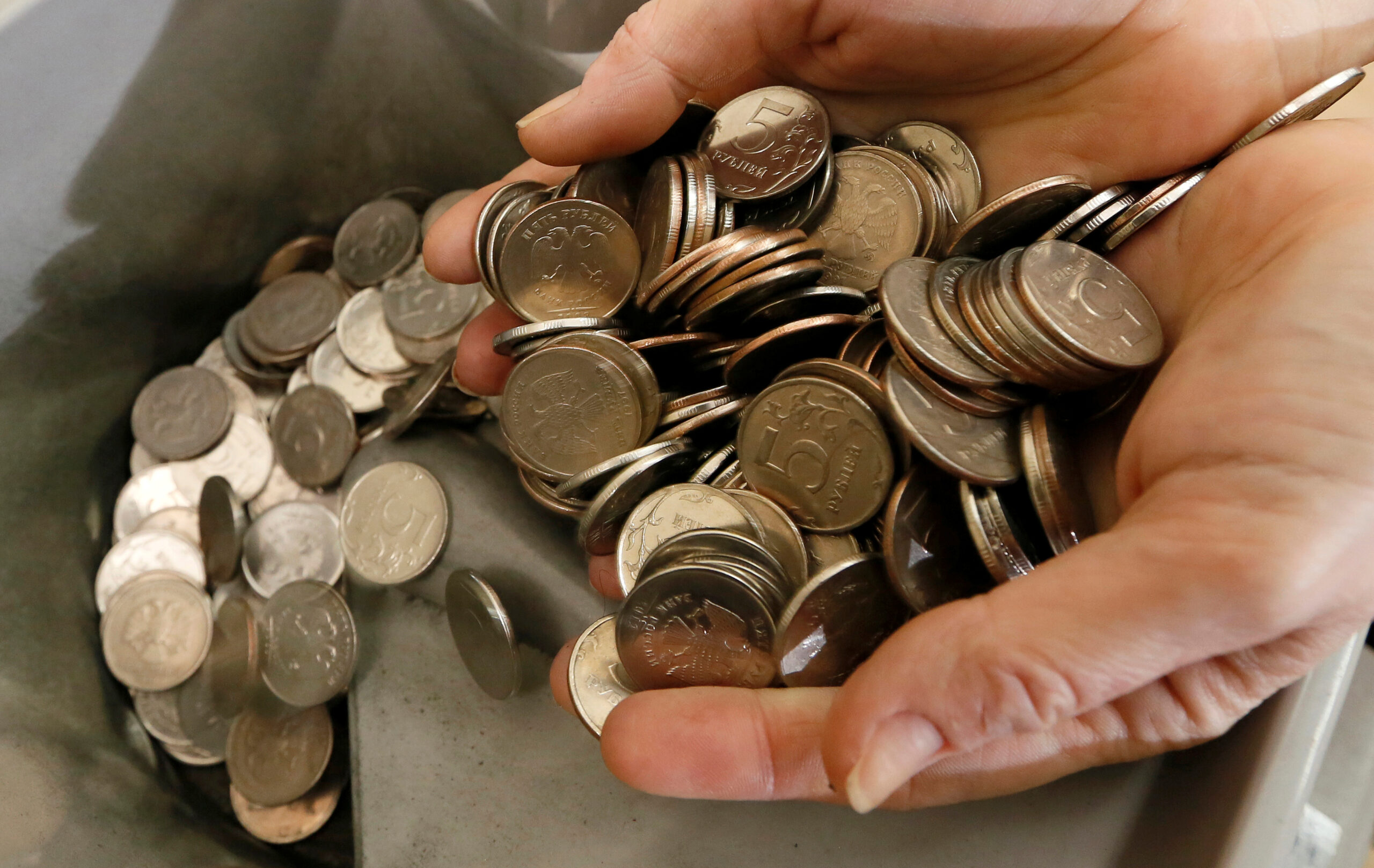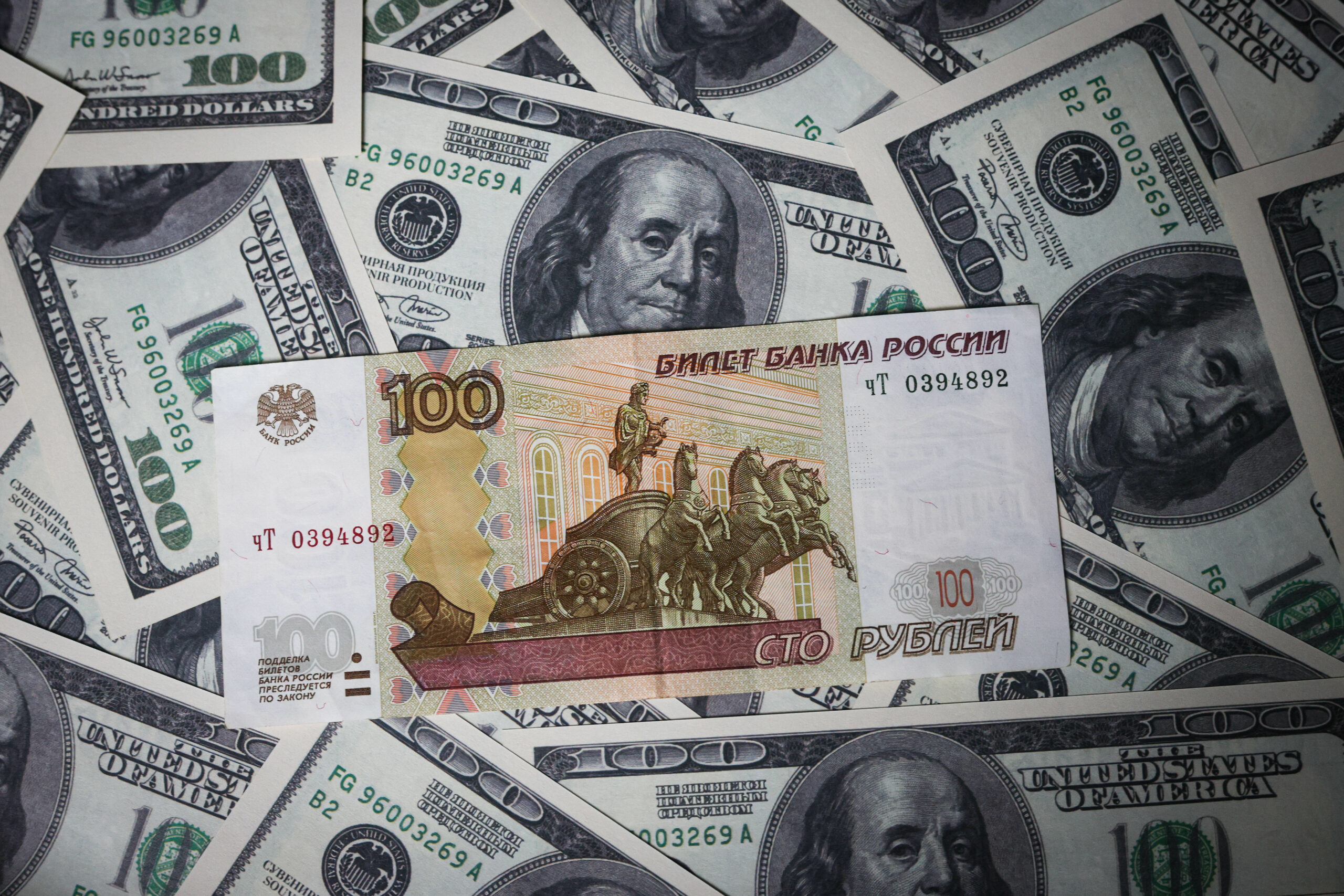It’s become an article of faith that Moscow has ‘stabilized’ the economy and sees itself as confronting the renewed threat of Western sanctions over Ukraine from a position of comparative economic strength. Only one data point is broadly provided to support this claim: Russia now possesses a nominal record high of over $ 630 billion in international currency reserves.
Asserting that holding massive reserves reflects Russia’s economic stability is akin to seeing an expensive health insurance policy as a sign of good health. The stiff premiums may ensure you can afford surgery or palliative care, but don’t address your lack of exercise, smoking habit, drinking to excess, or pre-existing conditions. Reserve accumulation is not good in and of itself. Nor has it helped — or will it help — the economy at present. COVID has only deepened the crisis of stagnation and underlying weaknesses of Russian economic policy. Any account of Moscow’s strategy of compellence towards Ukraine must look beyond the potential stabilizing role that reserves play politically, and examine why Russia accumulates reserves, what that accumulation is doing to the economy, as well as decipher economic realities beyond budget surpluses and record reserve levels.
Stacking Cash
Today’s fortress balance sheet has its roots in the «Kudrin system.» Since large influxes of FX earnings would strengthen the ruble’s value, oil windfalls threatened to crowd out domestic manufacturing with imports. Kudrin himself has made clear that he created sovereign wealth funds for oil & gas rents to manage the ruble exchange rate. Russia’s foreign currency reserves skyrocketed beyond anything that was necessary to provide insurance against financial crises like that of 1998. Between 1999 and 2007, Russia’s total reserves (including gold) rose from $ 12.3 billion to $ 478.8 billion. The Russian economy had become a foreign currency accumulation machine. Reserve accumulation considerably exceeded what was necessary to manage financial crises or external borrowing obligations by the mid-2000s.
Reserves would come in handy as a crisis tool in 2008−2009, providing insurance against shocks for external borrowing and financial resources that could be used in place of running up larger budget deficits in response to a shock. About $ 52 billion in reserves were spent in 2008, roughly 10% of reserves available, to cover liabilities and restrain the size of the budget deficit. But reserves exceeded 2007 levels in nominal terms as oil prices rose back above $ 100 a barrel by 2010. After the annexation of Crimea, they again evolved into an insurance policy mitigating sanctions and geopolitical risks as Russia abandoned direct exchange rate management by floating the ruble.
Currency devaluation became politically useful for the regime. Industries from oil & gas to metals producers, miners, and manufacturers benefit from a weaker ruble because it increases their relative earnings since their costs are in rubles while export earnings are generally in US dollars or Euros. Manufacturers bidding on state contracts or seeking state money for import substitution benefit as imports become less competitive. The biggest losers were Russian households facing higher costs. Since 2016, roughly 75% of consumer goods have been imported. A weaker ruble worsens inflation and inflation risks from exchange rate fluctuations.
A case of consumption
Since reserves are accumulated by exporters depositing their foreign currency earnings, Moscow depends on trade surpluses. The dominant position of commodity exporters providing tax receipts and generating exports creates persistent links between higher commodity prices, larger export surpluses, and federal budget surpluses. The combination of both surpluses is seen to promote economic stability even amid conditions of institutional chaos across the Russian economy.
But a trade or budget surplus aren’t inherently stabilizing. A trade surplus reflects the comparative balance of what is produced and consumed in a country. A weaker currency makes imports more expensive and reduces imported consumption. Balanced budgets or budget surpluses reduce consumption by taking more money out of the economy and in the case of MinFin’s oil & gas budget rule and National Welfare Fund, sterilizing more export earnings and parking them aside. The combination significantly hurts growth. We can see this in a stylized equation breaking down the components of GDP:
GDP = Consumption + Investment + Government Spending + (Exports — Imports)
While higher imports are theoretically a net negative for GDP, the strength of imports reflects levels of consumption. Higher levels of consumption generally drive higher levels of investment. In an economy like Russia’s, where the government plays such a large role, lower levels of government spending have a more pronounced impact on levels of investment and consumption. Pursuing large surpluses ends up lowering GDP. Pre-COVID, the National Welfare Fund (NWF) was required to maintain 7% of GDP in liquid reserves with the ostensible aim of providing a liquidity cushion and cash for investment. That’s now been raised to 10% of GDP, with a cap of 1% of GDP available to balance the federal budget in case of another oil price shock. That’s a ton of money in GDP terms being held «for investment» that’s now primarily an insurance policy.
This growth is terrible, and such small portions!
This gets to what’s broken about the regime’s economic policy. Russian growth from 1999−2008 was driven by transfers of surging resource export earnings to the regional and federal budgets to be redistributed via social spending and state procurements as well as surging demand for goods and services that supported the extractive sector. Growth collapsed after 2008−2009. By 2013, it was starkly evident that a consumption-led growth model was the only way, given that Russia had become a high-income country, not a competitive manufacturing exporter with cheap labor.
Politically, the regime has proven capable so far of sacrificing growth to maintain its health insurance policy. It’s foolish, however, to equate that with stability. Efforts to raise non-oil & gas revenues have had an adverse effect on household finances. The decline in incomes — about 5−6% lower in real terms than 2013 given recent methodological reformulations — has corresponded to rising private borrowing. In nominal terms, household borrowing rose 219% between January 2013 and January 2022. This doesn’t capture the effect of inflation, but is useful since households assess their costs in nominal terms and much of the borrowing is done short-term for consumer purchases at punishing interest rates. Between January 2020 and January 2022 alone, household ruble-denominated debts rose by roughly 7.2 trillion rubles amid conditions of real income decline for many and rising prices, over 5% of GDP. By comparison, business ruble debts have risen to just 8.47 trillion rubles in that timeframe as state policies intervened. Households bore the brunt of the COVID shock.
The effect of this is to increase the exposure of business and household consumption across the economy to fluctuations in interest rates and reduce the quality of the poor 1−2% annual growth the Russian economy has managed to achieve since 2014. IMF data shows that 2020 net private debt in Russia was equivalent to 215% GDP. Sovereign debt may be low, but policies that reduce sovereign debt force the private sector to borrow more spreading risk to businesses and households instead. The pursuit of large FX reserves has weakened investment alongside consumption. This can be inferred from sources of investment funding — firms’ self-funding accounted for 55% of investment financing by 2020, a 10% increase from the 2014 levels and reflective of higher borrowing costs, weak demand, geopolitical risks, and commodity price swings on top of austerity policies. If the state refuses to borrow and spend, then it forces the private sector to do so on worse terms with greater demand uncertainty. Business has become more dependent on state spending as have households who’ve seen social transfers’ share of their incomes rise to from about 18−19% to 22−23% for 2020−2021. If you think macroeconomic policy is a mess, look at what’s really happening across the economy.
Rethinking the «Boom»
Annualized inflation hit 8.39% for 2021 and has continued to accelerate in January reaching levels not seen since January 2016 when the economy was still adjusting to devaluation and the oil shock. The Central Bank has raised the key rate to 9.5%, the highest level in 5 years with the expectation it will continue climbing above 10% to levels not seen since inflation exploded in Russia due to the economic shocks of 2014−2016.
Since the start of the pandemic, there have been an estimated 1.18 million excess deaths in Russia corresponding to a population decline in 2021 of 1.04 million people and disproportionately high death tolls in under-invested and under-developed central Russian regions with older populations. Over the summer and fall of 2021, Russian businesses surveyed by FinExpertiza estimated that they were cumulatively short 2.2 million needed hires. That figure persisted despite the steady decline of the unemployment rate since the initial economic shock. The regime’s public health failures are a systemic economic problem given the difficulty of attracting enough labor quickly, otherwise forcing firms to raise wages in an economy that is designed to stagnate based on macroeconomic policy.
The Ministry of Finance is trying to crack down on wasteful spending as part of its broader campaign to limit the effects of inflation on state contracts and budget costs, but its revisions to the budget codex have been met with considerable resistance from construction contractors for being unworkable. Due to labor shortages and rising costs for steel, rebar, and countless other commodity inputs, an estimated 1 trillion rubles’ worth of state construction contracts were terminated last year. That’s in the realm of 0.8% of 2021 GDP that went mostly unspent and is now being transferred over into contracts this year. Road construction contractors led by Gennady Timchenko and Arkady Rotenberg have successfully lobbied for adjustments in relation to project costs — various measures were taken from 4Q 2020 onwards to attempt to set artificial caps on renegotiated costs. They have also lobbied to be paid a premium by the state for completing works in a timely fashion. The costs of paying friends are rising as are the challenges for delivering on basics like road repair.
Countless other problems with the official narrative of stability or booming growth and incomes arise when you take even a cursory look at the data and reporting. As of 2019, economy-wide investment into transport and storage was 25% lower in real terms than in 2013, according to Rosstat. It’s not difficult to imagine some of the current inflation is linked to transit constraints as huge volumes of Chinese freight have spilled onto the Russian rail network and container rates have surged. Rising interest rates are already creating problems that can backfire. Agricultural producers are warning that rising borrowing and financing costs could raise food prices as the existing program of subsidized credits has been exhausted. The Ministry of Construction is panicked that rising credit costs will sink necessary investments into communal utilities and threaten project financing nationally. Failing to make those investments today creates further inflation and instability in the future.
And that is all before we entertain a scenario where the Kremlin has to handle the economic fallout from a major conflict in Ukraine.










